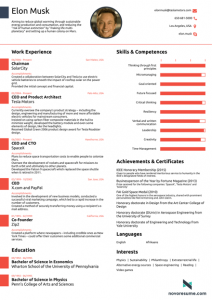Shopping Cart abandonment is indisputably the headache of the online retail industry and is causing retailers a lot of pain and frustration.
To tackle shopping cart abandonment efficiently merchants have to improve the browsing and the checkout experience for the customer, build trust, reassurance and to increase the perceived level of security. Bellow, we will be looking at the 13 most effective techniques that will help you improve the performance of your shopping cart experience and highly increase your sales.
Don’t miss Tactic 11: our favorite tactic when it comes to tackling the shopping cart issue.
The State of Shopping Cart Abandonment
According to estimates approaching the end of 2016, e-commerce merchants were likely to lose about $ 4.6 trillion due to cart abandonment. When customers added a product to the Shopping Cart with the intention to buy it, and at the last step of the Checkout process they decided to close the page, therefore never purchasing the products. A shocking 73.4% of shopping carts were abandoned costing online stores massive losses in merchandise sales.
Let’s look at some numbers to understand why taking action immediately on these issues is crucial:
– There is a lot of potential to convert abandoned carts: 25% of shopping carts never return, while 75% leave with the intent to return
– While some customers will unavoidably abandon their cart without any intention to purchase, a better checkout design will improve the cart conversion by 35%
– Timing is critical. You have a better chance of converting the leads if you send out cart abandonment emails right away: 30 minutes to one hour is the optimal time to send them.
1. Offer free shipping and free returns (if possible)
It is a well-known fact that the shipping cost for a product is the #1 reason for shopping cart abandonment, with large percentages of online buyers abandoning their carts and making purchasing decisions on a few dollars.
There is not much to add here besides that when possible and applicable you must offer customers free shipping and returns.
If you cannot offer it then you should consider some clever ways in which you can save money when shipping your products are:
– taking advantage of volume discounts from shipping companies like USPS, UPS, DHL
– offer clients combined shipping discounts where buyer get discounts for buying more than one item
2. Simplify the buying experience by allowing guest account purchasing
For many customers, the idea of creating an account, confirming email addresses and all extra steps they are asked in order to proceed with the product checkout process is time-consuming, annoying and slows down the process.
By enabling Guest account when buying you give your buyers the option of choosing whether or not they want to become a member of your site, making a one-time purchase or simply avoiding unnecessary steps.
3. Build trust by displaying buyer reviews
When trying to make a decision to buy your product shoppers will often look for other buyers reviews and opinions about their experience with your product as well as other aspects of the buying process. Having seller ratings and buyer reviews is crucial because 90 percent of customers say reviews influence their buying decisions and 80 percent consider online reviews as valuable a personal recommendation. Include honest and real customer reviews on your products.
4. Offer more than one method of payment
Making your customer’s experience simple, fast and without obstacles should remain your main goal and this includes offering the buyer a variety of payment methods to chose from during the checkout process. It is a great practice to include everything from payments with credit or debit cards to newer or less widely used payment system options such as Google Wallet, Paypal.
5. Send mobile and/or email reminders and offers
Even after a customer has abandoned a shopping cart there are still actions you can take to get precious information on the reasons why they abandoned the shopping cart and get them to come back to your site and complete their purchases.
Email and mobile (in-app) notifications are fantastic ways to reach out to those shopping carts abandoning customers. You can perform wonders with a well thought, non-intrusive email or text including either small surveys to ask the customer the reason why they abandoned the shopping cart, add a discount to the price of the product they were trying to buy or even use sense of humor with a phrase such as: “Hey, Monica! Are you our champion?”.
6. Gamify the checkout process and display a progress indicator
Online buyers get very irritated by prolonged, numerous pages and/or steps checkout processes. By displaying a Progress Indicator on your shopping carts you will give customers the assurance of knowing how may steps they will need to take to purchase your product.
The fewer pages or steps it includes, the more appealing it will be to the customer’s desire for a fast and easy purchase. Puma does an excellent job at this with a clear, simple yet very helpful indicator design.
7. Offer live chat support during checkout
Often buyers come across doubts, questions, requests or need any other kind of help and assistance when sorting through your online products and when paying for a product. A live, real-time chat support on your shopping cart offers the buyer the ability to ask questions that could help them decide right on the spot whether or not they want to buy your product.
You will have a chance to influence the customer’s decisions as they are about to purchase a product which then can result in higher shopping cart conversion rates and customer satisfaction.
8. Mobile optimization is fundamental
The mobile trends are not to be ignored, as last year became quite clear that the landscape of retail is going to be dominated by mobile devices.
Although both desktop and mobile platforms suffered from shopping cart abandonment, only 16% of Mobile customers finalized a purchase with a discouraging result of 84% abandonment rate, compared to 74% abandonment rate for desktop customers.
9. Display product thumbnails during checkout
Let’s keep in mind that we as humans are very influenced by images and when it comes to the shopping cart experience this is not an exception. Displaying only the text or name of the product your customers are buying during check out is OK, but using a small image of the product at all times during the checkout process gives you a great chance to provide buyers a strong visual clue and reassurance that they are buying the product they really wanted.
Product thumbnails on the cart page will tie the browsing and checkout experience together and the thumbnail will act as a confirmation that their product of choice was indeed added to the cart.
In the example below only one of the retailers is inserting the product thumbnails in the checkout process and closing the gap between the browsing and the checkout experience.
Best practices:
– use product thumbnails on the cart page, order page and in the email confirmation page
– the thumbnail should be a resized version of the original image so that it doesn’t confuse the shopper
– use different thumbnails for each of the product variants.
10. Offer a secure shopping experience
According to a survey ran by the independent web usability research institute, Baymard, 18% of the shoppers have abandoned during the checkout because they didn’t trust the online store with their credit card information.
In order to increase the perceived level of security of the checkout process there are a number of things that merchants can do:
– reinforce the payment fields on the checkout page
– add a SSL seal to establish the sense of trust
– add visual elements during the process that work on building up the trust
11.Re-target your customers
We’ve established that 75% of potential customers leave at the checkout with the actual intention of returning and that you can convert them if they’ll see a friendly reminder of some sort.
Use a Facebook pixel to create a custom audience for shopping cart abandoners. Retargeting to undecided customers has proven to be extremely successful with a response rate 400% higher than non-targeted advertising.
With the help of platforms like Adroll you can retarget your visitors on Instagram, Facebook, Google, mobile apps and other networks. If you want to know more on retargeting Adroll has put together two extensive guides with the latest tactics for retargeting: The Performance Marketer’s Guide to Retargeting Part 1 & Part 2.
12.Offer effortless Shopping cart Saving
When a customer walks into a physical store to buy a product, such process is most of the time simple and straightforward. Buying online however works differently as there can be several reasons why a buyer will love one of your products and want to buy it but decide to save it for later such as: not having their credit card at hand or even wanting to come back the next day in case you have included a discount on the product.
Now, something people hate, because they don’t have the time or they’re lazy – is to have to search for a product they already have chosen. Here you have again a great chance to help and make your customers happy by adding a simple and easy to see “Save Cart” button. All their options will be remembered and ready for them to continue to the checkout and you will be closer to making another sale.
13. Be very clear about Shipping and all other costs
Something that frustrates online buyers and greatly influences their purchasing decisions, as well as their loyalty to your brand and products, is when they expect to pay one price for shipping and then they get hit with hidden costs and ridiculous shipping charges. It is so frustrating to customers that UPS data shows most, if not all, costs associated with shipping to be the biggest reason for shopping cart abandonment.
So, we know customers hate shipping surprises even more than they dislike paying for shipping itself. What can you do about it? Be very upfront, clear, specific and honest about all shipping costs, possible changes and everything else your customers need to keep in mind until they get the product to their door. Yet again, you will be giving them peace of mind and you will also have their trust.
It takes a lot of effort and time to create long-lasting relationships with customers, and only a couple of mistakes to lose their loyalty. It is a tough fight out there and the only way to survive is by staying abreast with trends and new technologies that improve the buyer’s shopping experience.
If you are an online merchant trying to tap into Amazon’s full potential and you have found this post useful, then you’ll probably find the eBook Double your Amazon Sales with 9 Proven Tips useful. Download it and learn how to improve the quality of your feed and your campaigns.
Digital & Social Articles on Business 2 Community(53)





